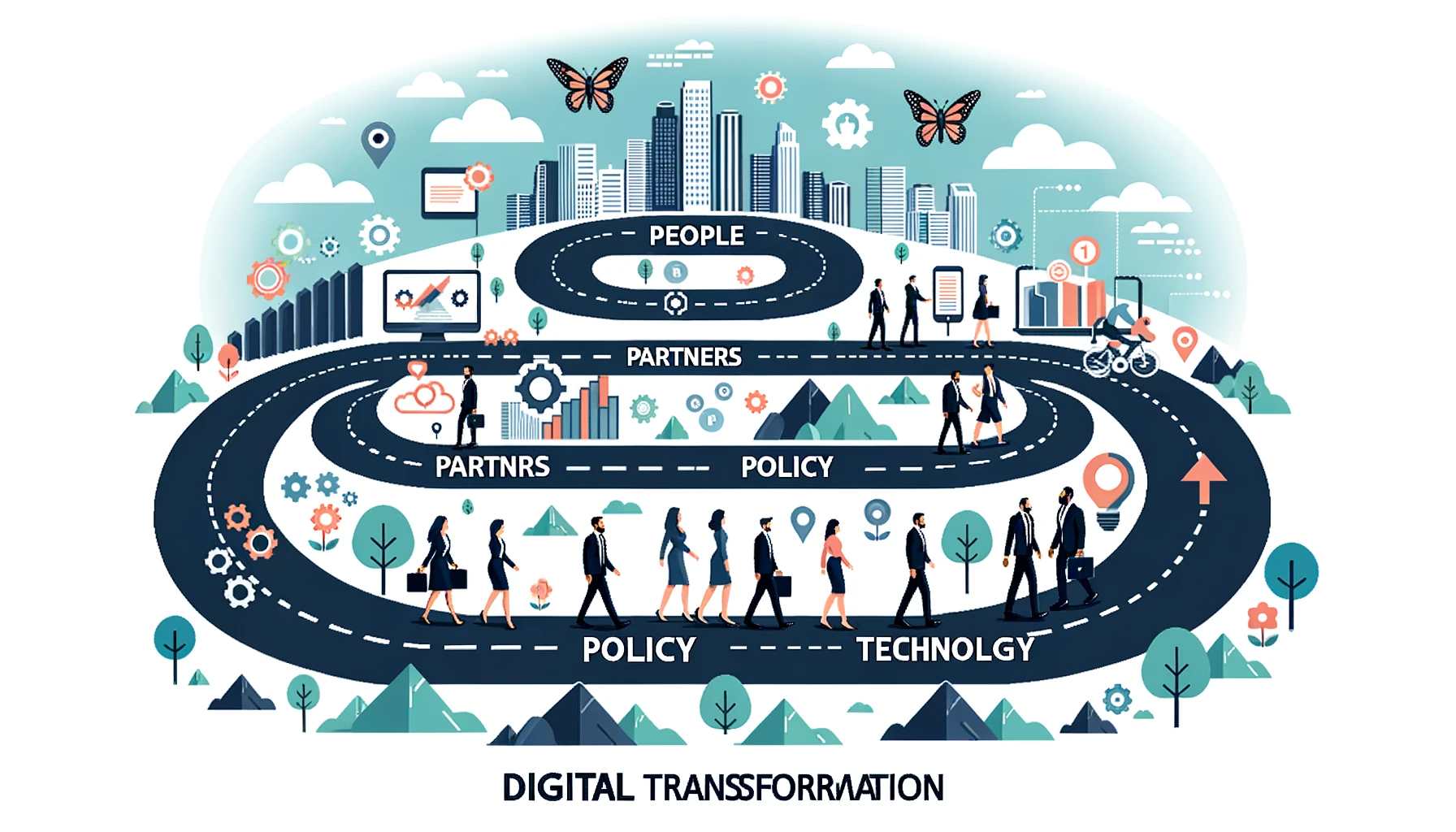
1. People: The Heartbeat of Transformation
Before diving into tools and systems, consider the users – the people who’ll be interacting with the technology daily.
- Evaluation: Begin by gauging the digital proficiency of your staff. A clear understanding of their digital literacy is paramount for any digital venture.
- Training: Digital transformation may require new skills. Ensure your team is equipped with the knowledge they need, offering targeted training sessions where gaps exist.
- Support: Even the most tech-savvy might stumble. A robust IT support system ensures continual productivity and boosts confidence in adopting new technologies.
2. Partners: Strengthening External Relationships
Your external partners – whether suppliers, collaborators, or customers – will play a pivotal role in the transformation journey.
- Communication: Keep the lines of communication open, clear, and consistent, ensuring that your external stakeholders are well-informed and aligned with your digital direction.
- Training: Equip partners with the knowledge they need to interact seamlessly with your new systems.
- Feedback Loop: A two-way dialogue ensures the systems not only serve your internal needs but also provide value to your external partners.
3. Process: The Blueprint for Efficiency
Transformation isn’t just about technology – it’s about optimizing processes to be more effective and efficient.
- Mapping Current Workflows: Understand your current state. Document existing processes to identify inefficiencies and bottlenecks.
- Designing New Workflows: Reimagining your processes can lead to significant productivity gains, especially when they’re aligned with the capabilities of new technologies.
- Testing: A phased approach is key. Test new processes in controlled environments before rolling them out organization-wide.
4. Policy: Establishing Boundaries and Expectations
Clear policies ensure that everyone knows the rules of engagement with the new systems.
- Usage Policy: Set clear guidelines on how the new systems should be used. This encompasses everything from data entry protocols to behavorial expectations.
- Security Policy: In our digital age, security is paramount. A clear policy can help mitigate risks associated with data breaches.
- Review and Update: The digital landscape evolves rapidly. So should your policies. Periodic reviews ensure they stay relevant and effective.
5. Technology: The Tools for Transformation
Last but by no means least, the technology itself forms the bedrock of digital transformation.
- System Selection: Your choice of technology should reflect your organizational needs and strategic goals.
- Integration: Siloed systems hinder progress. Seamless integration between old and new systems is vital for efficiency and productivity.
- Maintenance: Technology demands regular upkeep. Factor in updates, maintenance, and scalability from the outset.
In conclusion, digital transformation is a multifaceted endeavor that requires a well-rounded strategy. By paying close attention to the 4 Ps and T – People, Partners, Policy, and Technology – decision makers can ensure a holistic and succesful transition into the digital age.
If you’re embarking on a digital transformation journey, we invite you to utilize our Digital Transformation Workbook.
